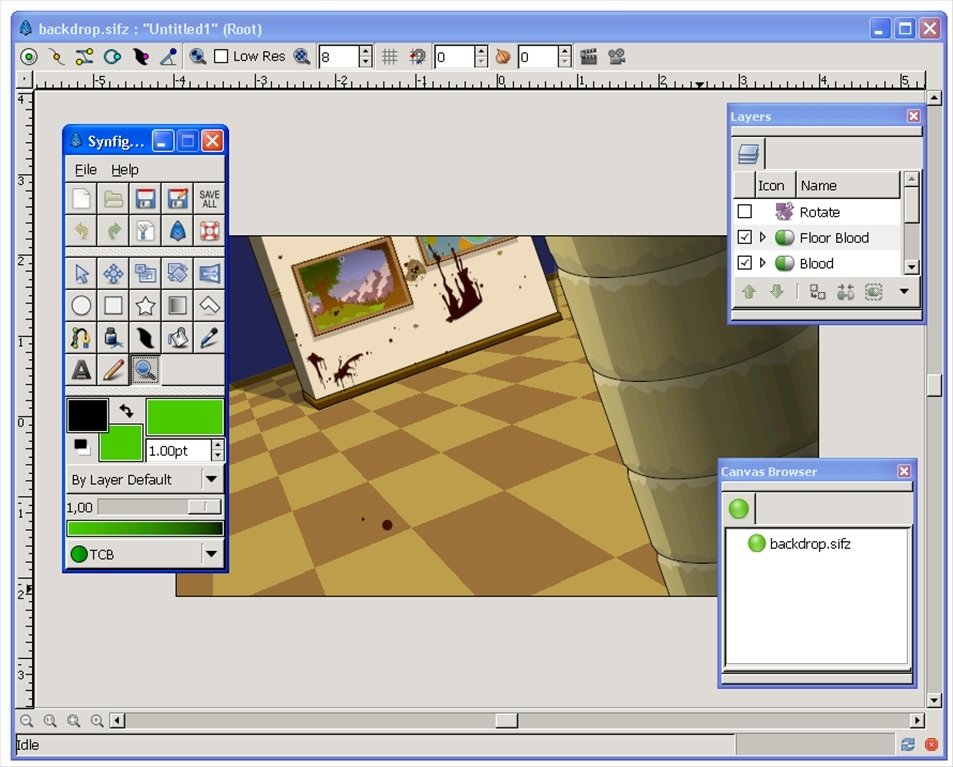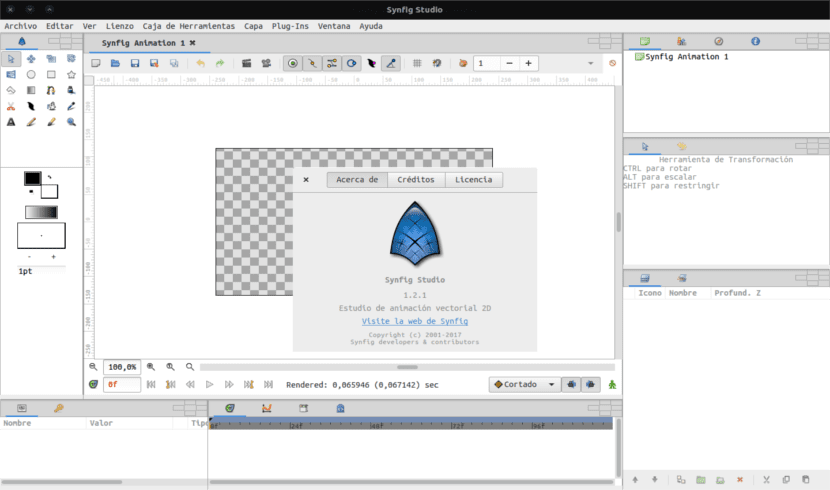
OpennessĪs with Blender's open movies, part of the Morevna Project's goals are to
SYNFIG STUDIO SOURCE MOVIE
The final movie will be rendered in 16:9 1080p resolution. Further compositing (such as special effects) is done in Blender for final output. Into key frames in Synfig, which is used to render the animation. When ready, the various layers of artwork are combined and converted All of the content is stored in a Git repository, to allow the remote team members to coordinate their work. Vector-based character designs are drawn in Inkscape, while 3-D models for buildings, machines, and other non-character entities are produced in Blender. Rough sketches as well as backgrounds and other static imagery are produced in the raster editors Krita and Gimp. Animatics are made in Pencil, a cell-oriented "flipbook"-style animation tool. The first portion of the screenplay has already been storyboarded and broken down into shots, and as the team completes work it has been posting demo videos to YouTube - completed animations and "animatics" - the wireframe, in-progress animations that bridge the gap between static storyboard and finished product.įor the actual production pipeline, Dmitriev and the other artists use a variety of open source tools. The script (in English and in Russian), character and production designs are all publicly available on the project's wiki - so don't look if you wish to avoid spoilers. For its story, the project decided on the Russian folk tale " Marya Morevna" - but re-imagined in a futuristic setting befitting the anime style. Their process reflects that of a traditional animated movie team: it starts with an idea, followed by a screenplay, storyboard, character designs and other creative work, well before animation itself gets underway. Production and workflowĭmitriev is active in the Synfig Studio project and, since announcing the Morevna Project, has gathered a small team of like-minded contributors and artists.
SYNFIG STUDIO SOURCE SOFTWARE
The animator needs only to draw key frames, and the software smoothly interpolates between them to create motion. Unlike traditional cell-based animation, in which each frame is individually drawn, Synfig uses vector graphics as its underlying elements. Like Blender, it was originally written in-house at a private animation studio as closed source software, but was later opened. Synfig Studio is an animation suite built for 2-D production. The first product was a brief short created entirely with the Synfig Studio animation package. Dmitriev is an anime fan as well as an animator and open source contributor, and in mid-2008 decided to combine his interests in one project. Along the way, the work provides stress-testing, feedback, and development help to the open source software used, while raising awareness of the quality of the code.ĭespite the popularity of 3-D animated features churned out by Pixar and its competitors, 2-D animation is not a has-been style - particularly when you consider the wildly popular world of anime.
SYNFIG STUDIO SOURCE LICENSE
The goal is to produce a production-quality, full-length animated feature, using only open source software, and license the source content and final product under free, re-use-friendly terms.



Konstatin Dmitriev's Morevna Project is to 2-D animation what the Blender Foundation's Open movie projects have been for 3-D. This article was contributed by Nathan Willis


 0 kommentar(er)
0 kommentar(er)
